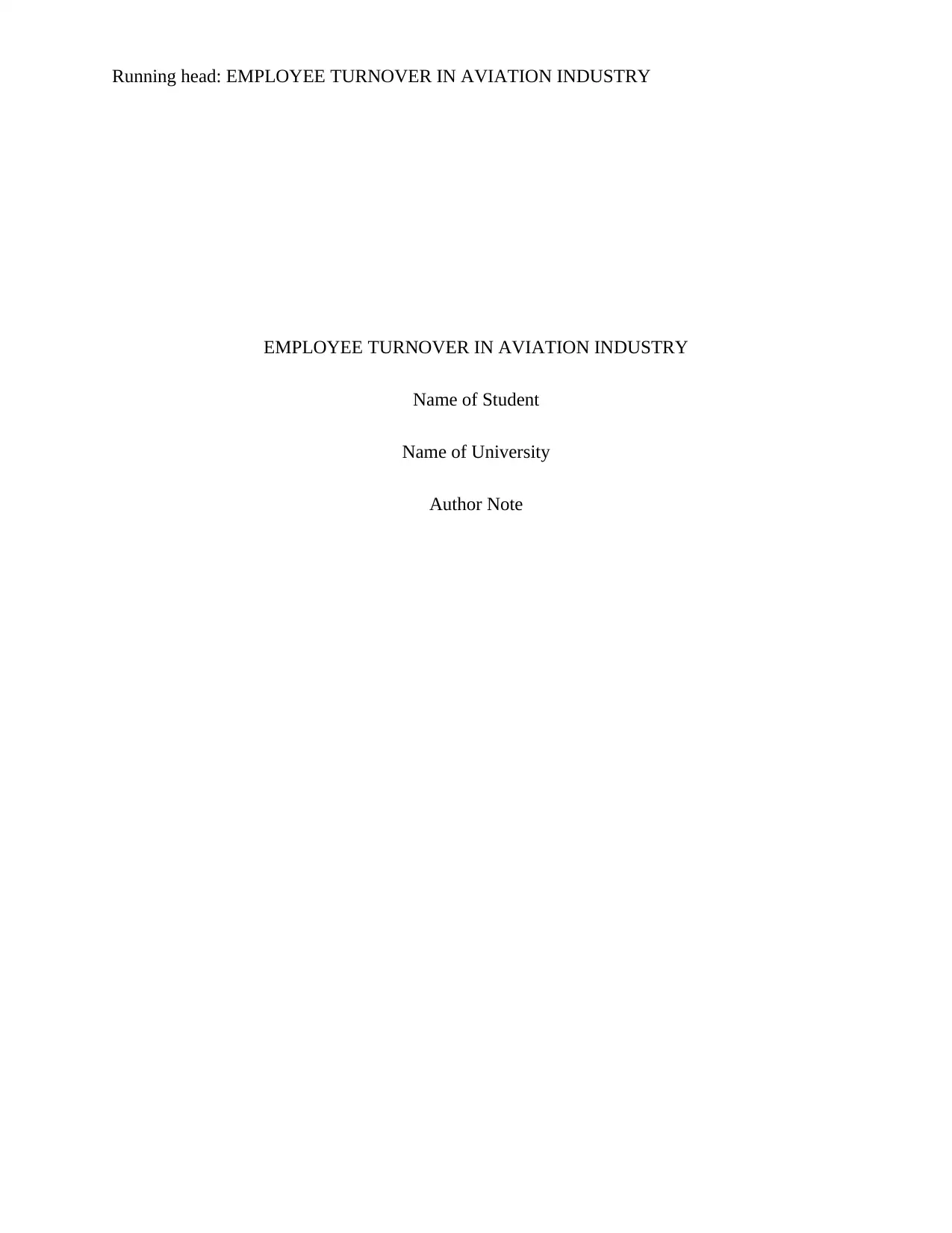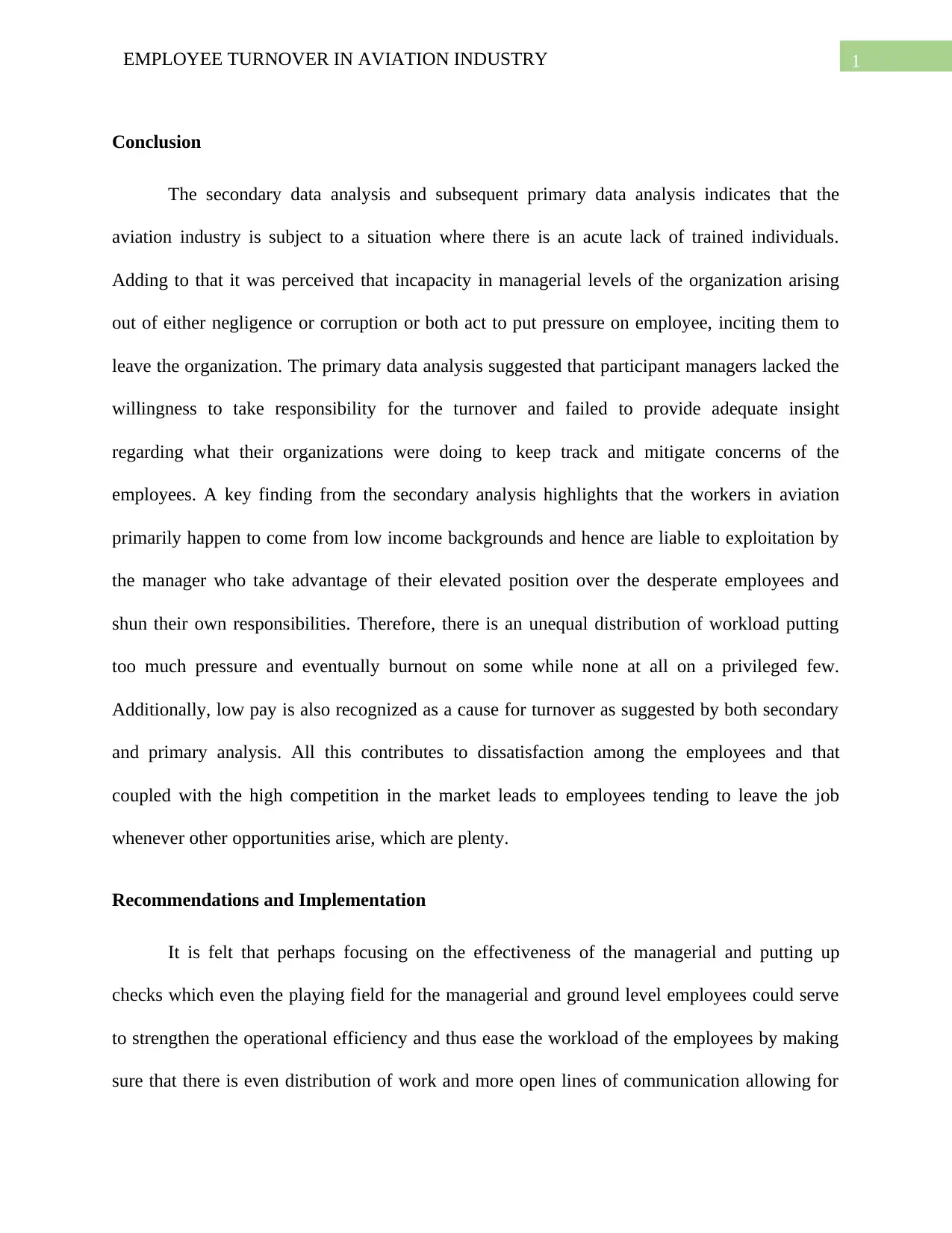University of X - Aviation Industry Employee Turnover Analysis Report
VerifiedAdded on 2021/06/15
|3
|508
|230
Report
AI Summary
This report delves into the critical issue of employee turnover within the aviation industry. The analysis, based on secondary and primary data, highlights a significant lack of trained personnel and managerial shortcomings. The study reveals that managerial negligence, corruption, and unequal distribution of workload contribute to employee dissatisfaction and turnover. Low pay is also identified as a key factor. To address these issues, the report recommends improving managerial effectiveness, ensuring fair distribution of work, and establishing open communication channels. Furthermore, the report suggests implementing on-the-job training programs and conducting joint workshop sessions for both managerial and ground-level employees to enhance communication, foster healthy competition, and improve employee performance. Annual assessments incorporating employee feedback are also recommended to mitigate communication issues and address training inadequacies.
1 out of 3









![[object Object]](/_next/static/media/star-bottom.7253800d.svg)